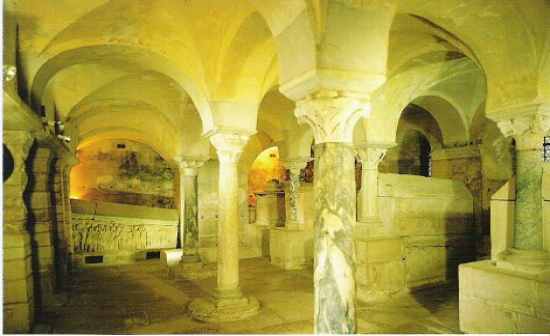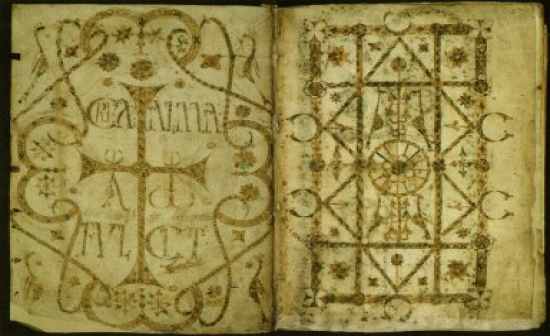Cards In This Set
| Front | Back |
 |
Sword and scabbard from the tomb of Childeric
before c. 482 silver-gilt and cloisonne garnets Tournai, Belgium |
|
Scriptorium
|
A room in monasteries devoted to the copying, writing, or illuminating of manuscripts
|
|
Illumination
|
The art of decorating a text, page, or initial letter with ornamental designs, minatures, or lettering.
|
|
Incipit
|
Introductory words of a text
|
|
Sacramentary
|
A liturgical book containing the canon of the Mass (the liturgy, Eucharist and prayers, but not things that change)
Is used by the priest |
|
Lectionary
|
A liturgical book containing selections or readings from scripture to be read during the worship service.
|
|
Uncial
|
Script; a writing style having somewhat rounded capitals
|
|
Cursive Minuscule
|
Small cursive script developed from uncial between the 7th and 9th centuries
|
|
Escutcheon
|
An ornamental plate
|
|
Niello
|
Inlayed design on the surface of another metal; black in color and consisting of copper, silver, or lead
|
|
Majuscule
|
Script composed of all capital letters
|
|
Synod of Whitby
|
(663-664) A council or an assembly of church officials or churches that strengthened British ties to Papal Rome
Anglo-Saxon/HIberno-Saxon artists began to draw on the heritage of Roman and Byzantine art in the British Isles |
 |
Crypt, Abbey of Notre Dame; Jouarre, France
7th century a monastic church deticated to St.Paul the hermit Contains spoliated colomns with new capitals |
 |
Gregory the Great's Homeliae in Ezechiel
probably later 7th century from the monastery of Luxeuil uses cursive minuscule is a lectionary |
|
Carpet page
|
Common in insular illuminated manuscripts
found at the beginning of the Gospels usually the first page and contains geometric patterns |



